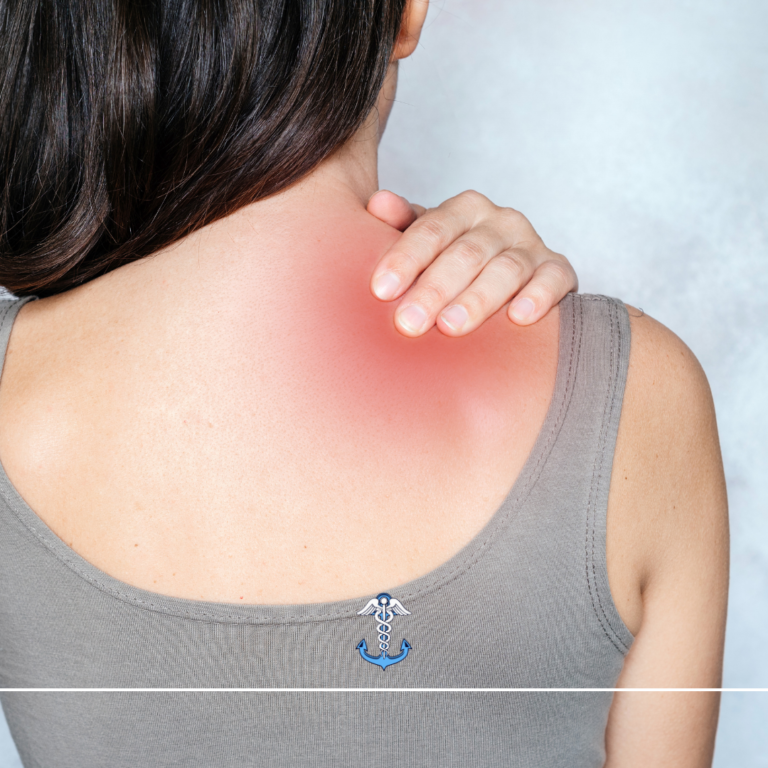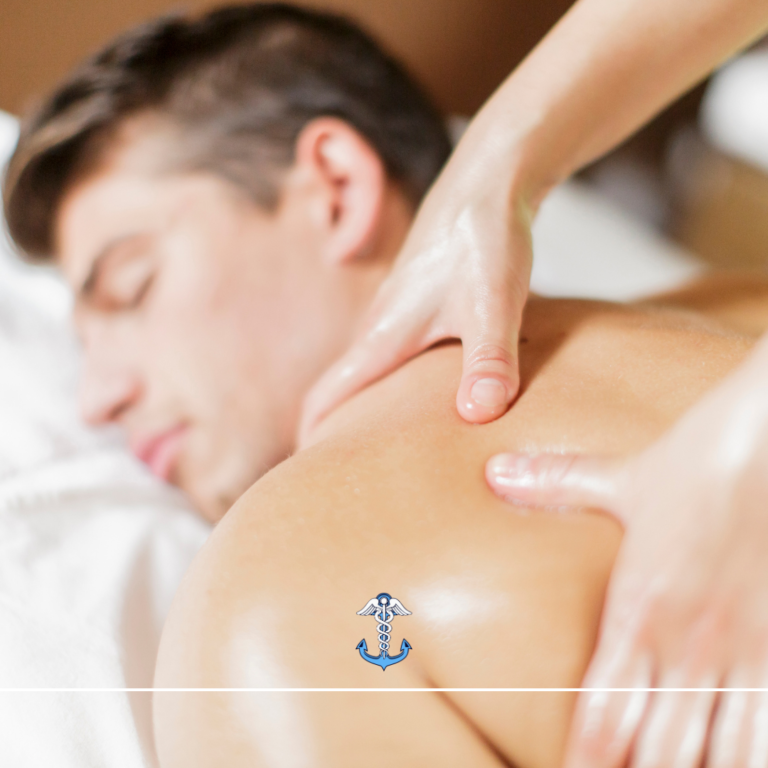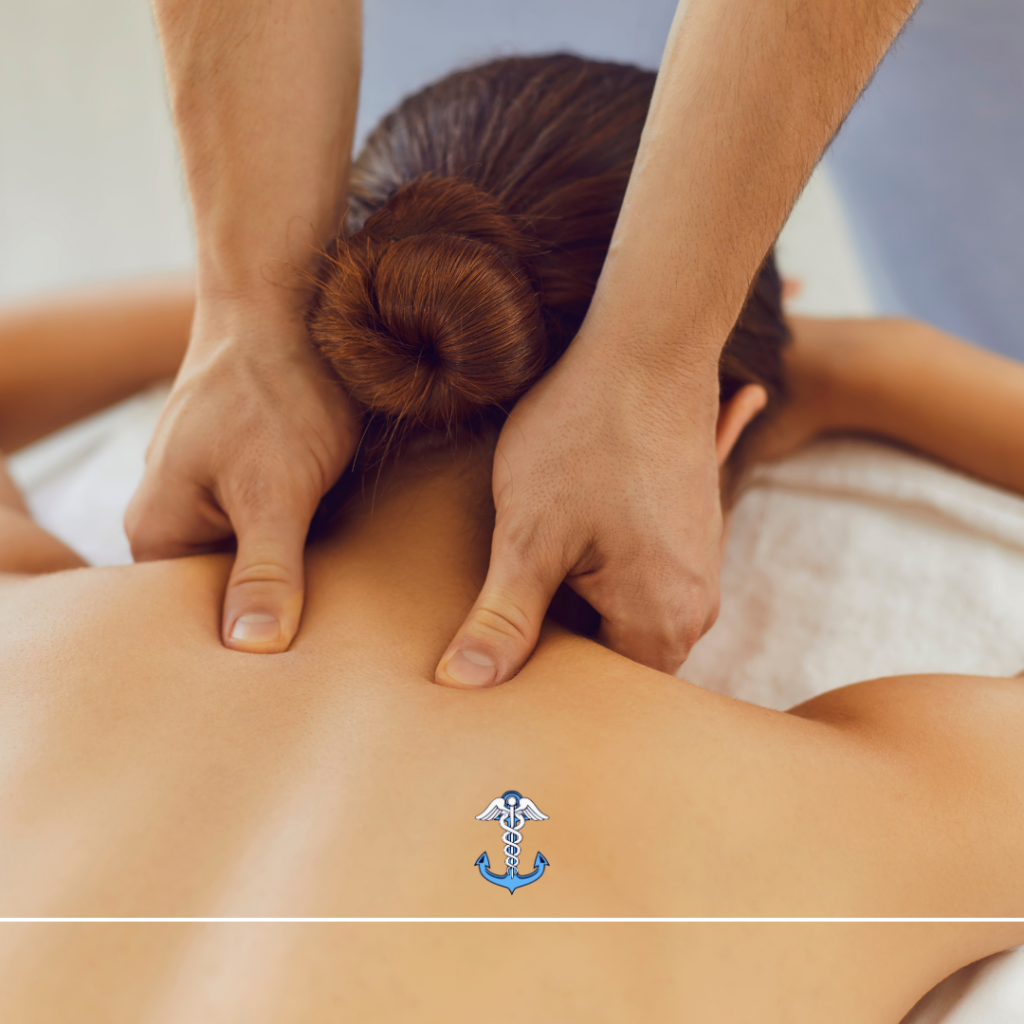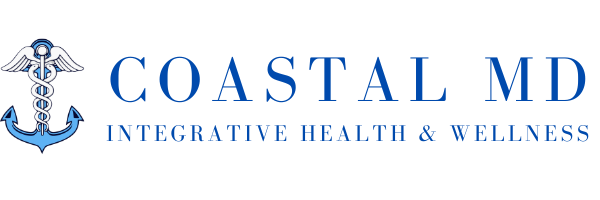Medical Massage Therapy
Medical Massage Therapy
Medical massage therapy is a type of massage therapy that is focused on treating specific medical conditions or symptoms. It is typically performed by a licensed massage therapist who has received specialized training in medical massage techniques. “Coastal MD incorporates massage with our licensed massage therapists as part of our comprehensive approach.“
Therapeutic massage after TPI helps disperse the injection by using manual pressure to eradicate stubborn trigger points and stimulate healing and relaxation.
We believe physical and mental well-being always go hand in hand.
Our skilled practitioners and therapists will lead you towards your optimum well being creating positive lifestyle habits and images to achieve your best state of well being.

Coastal MD specializes in an integrative and holistic approach to health & wellness for both men and women.
Medical massage therapy can be beneficial in a number of ways for living a happier, healthier, pain-free life.
Here are some of the key benefits:
Pain relief: Medical massage therapy can be highly effective for relieving pain caused by conditions such as arthritis, fibromyalgia, and injuries.
Improved circulation: Medical massage therapy can help to improve circulation by promoting the flow of blood and oxygen to the muscles and other soft tissues.
Reduced muscle tension: Medical massage therapy can help to reduce muscle tension by promoting relaxation and increasing blood flow to the affected area.
Improved range of motion: Medical massage therapy can help to improve range of motion by reducing stiffness and promoting flexibility in the muscles and joints.
Improved sleep: Medical massage therapy can help to improve sleep by reducing stress and promoting relaxation.
Reduced stress and anxiety: Medical massage therapy can help to reduce stress and anxiety by promoting relaxation and reducing the physical and mental symptoms of stress.
Improved immune function: Medical massage therapy can help to improve immune function by promoting the production of white blood cells and other immune cells.
Our licensed medical massage therapists work with our healthcare team to optimize muscle health and recovery following trigger point injections.
Petrissage
Petrissage is a massage technique that involves kneading, rolling, and squeezing the muscles, skin, and soft tissues. This technique is commonly used in Swedish massage and is aimed at improving circulation, reducing tension, and promoting relaxation.
There are several medical benefits associated with petrissage. These include:
Petrissage helps to improve blood flow and oxygen delivery to the muscles and soft tissues. This increased circulation can help to reduce pain, inflammation, and muscle soreness.
Improved range of motion: By loosening tight muscles and breaking up scar tissue, petrissage can help to improve joint mobility and range of motion.
Reduced muscle tension: Petrissage can help to release muscle tension and knots, which can improve flexibility, reduce pain, and improve overall physical performance.
Improved lymphatic drainage: Petrissage can help to stimulate the lymphatic system, which is responsible for removing waste and toxins from the body. This can help to reduce swelling and improve immune function.
Enhanced relaxation: Petrissage can help to promote relaxation and reduce stress and anxiety. This can have a positive impact on mental and emotional well-being, as well as physical health.


Effleurage
Effleurage is a massage technique that involves using long, flowing strokes to apply pressure to the skin and soft tissues. It is a common technique used in Swedish massage and is often used at the beginning and end of a massage session.The medical benefits of effleurage include:
Improved circulation: Effleurage helps to stimulate blood flow to the muscles and soft tissues, which can help to reduce pain, inflammation, and stiffness.
Reduced muscle tension: The gentle pressure of effleurage can help to loosen tight muscles and reduce tension, which can improve flexibility and range of motion.
Enhanced relaxation: Effleurage is a soothing and calming technique that can help to reduce stress, anxiety, and promote relaxation. This can have a positive impact on mental and emotional well-being, as well as physical health.
Improved lymphatic drainage: Effleurage can help to stimulate the lymphatic system, which is responsible for removing waste and toxins from the body. This can help to reduce swelling and improve immune function.
Improved skin and tissue health: Effleurage can help to improve the health and appearance of the skin and soft tissues by increasing blood flow, promoting lymphatic drainage, and reducing inflammation.Effleurage
Effleurage is a massage technique that involves using long, flowing strokes to apply pressure to the skin and soft tissues. It is a common technique used in Swedish massage and is often used at the beginning and end of a massage session.
The medical benefits of effleurage include:
Improved circulation: Effleurage helps to stimulate blood flow to the muscles and soft tissues, which can help to reduce pain, inflammation, and stiffness.
Reduced muscle tension: The gentle pressure of effleurage can help to loosen tight muscles and reduce tension, which can improve flexibility and range of motion.
Enhanced relaxation: Effleurage is a soothing and calming technique that can help to reduce stress, anxiety, and promote relaxation. This can have a positive impact on mental and emotional well-being, as well as physical health.
Improved lymphatic drainage: Effleurage can help to stimulate the lymphatic system, which is responsible for removing waste and toxins from the body. This can help to reduce swelling and improve immune function.
Improved skin and tissue health: Effleurage can help to improve the health and appearance of the skin and soft tissues by increasing blood flow, promoting lymphatic drainage, and reducing inflammation.
Tapotement
Tapotement is a massage technique that involves rhythmic tapping, pounding, and percussive movements with the hands, fingers, or a massage tool. This technique is commonly used in Swedish massage and is often used towards the end of a massage session.
The medical benefits of tapotement include:
Improved circulation: Tapotement helps to stimulate blood flow and lymphatic drainage, which can help to reduce pain, inflammation, and improve overall health.
Improved muscle tone: The rhythmic tapping of tapotement can help to stimulate and tone the muscles, which can improve physical performance and reduce the risk of injury.
Enhanced relaxation: Tapotement can help to promote relaxation and reduce stress and anxiety. This can have a positive impact on mental and emotional well-being, as well as physical health.
Improved respiratory function: Tapotement can help to loosen phlegm and mucus in the lungs and airways, which can improve breathing and respiratory function.
Enhanced nerve function: Tapotement can help to stimulate the nerves and improve nerve function, which can improve muscle strength and reduce pain.


Cupping Method
Cupping is an ancient therapeutic technique that involves placing glass or silicone cups on the skin and creating a vacuum to stimulate the underlying tissues. The suction created by the cups can help to increase blood flow, relieve muscle tension, and promote healing.
The medical benefits of cupping include:
Pain relief: Cupping can help to relieve pain and discomfort caused by muscle tension, inflammation, and other conditions.
Improved circulation: Cupping can help to improve circulation by promoting the flow of blood and oxygen to the muscles and other soft tissues.
Reduced muscle tension: Cupping can help to reduce muscle tension by promoting relaxation and increasing blood flow to the affected area.
Improved respiratory function: Cupping can help to improve respiratory function by promoting the clearance of mucus and other obstructions from the airways.
Improved immune function: Cupping can help to improve immune function by promoting the production of white blood cells and other immune cells.
Reduced stress and anxiety: Cupping can help to reduce stress and anxiety by promoting relaxation and reducing the physical and mental symptoms of stress.
Static Compression
Static compression is a massage technique that involves applying pressure to a specific area of the body for a prolonged period of time, without moving or gliding over the skin. This technique is commonly used in trigger point therapy, deep tissue massage, and myofascial release.
The medical benefits of static compression include:
Pain relief: Static compression can help to relieve pain and discomfort in the affected area by reducing muscle tension, improving circulation, and releasing trigger points or knots.
Improved range of motion: Static compression can help to improve joint mobility and range of motion by reducing muscle tension and stiffness.
Improved circulation: The pressure applied during static compression can help to increase blood flow and oxygen delivery to the affected area, which can help to reduce inflammation and promote healing.
Improved muscle function: Static compression can help to improve muscle function by releasing trigger points, reducing muscle tension, and promoting muscle relaxation.
Improved overall well-being: Static compression can help to promote relaxation, reduce stress and anxiety, and improve overall physical and mental well-being.


Myofascial Release
Myofascial release is a manual therapy technique that targets the fascia, a thin layer of connective tissue that surrounds and supports muscles and other soft tissues in the body. Myofascial release involves applying gentle, sustained pressure to areas of the body that are tight or restricted to help release tension and promote healing.
The medical benefits of myofascial release include:
Reduced pain and discomfort: Myofascial release can help to reduce pain and discomfort by releasing tension and restrictions in the fascia and other soft tissues.
Improved range of motion: Myofascial release can help to improve range of motion and flexibility by releasing tightness and restrictions in the fascia and other soft tissues.
Improved posture: Myofascial release can help to improve posture by releasing tension and restrictions in the fascia and other soft tissues that may be causing postural imbalances.
Improved circulation: Myofascial release can help to improve circulation by releasing tension and restrictions in the fascia and other soft tissues that may be impeding blood flow.
Improved athletic performance: Myofascial release can help to improve athletic performance by increasing range of motion and flexibility, reducing the risk of injury, and promoting recovery after exercise.
Trigger Point Release
Trigger point release is a therapeutic technique used to relieve pain and discomfort caused by trigger points, which are tight, tender knots that can form in muscles and other soft tissues. Trigger point release typically involves applying pressure to these knots in order to release tension and promote healing.
The medical benefits of trigger point release include:
Pain relief: Trigger point release can help to relieve pain and discomfort caused by trigger points, which can be a source of chronic pain and tension.
Improved range of motion: Trigger point release can help to improve range of motion and flexibility by releasing tension and tightness in the muscles and other soft tissues.
Improved circulation: Trigger point release can help to improve circulation by promoting the flow of blood and oxygen to the muscles and other soft tissues.
Improved athletic performance: Trigger point release can help to improve athletic performance by increasing range of motion and flexibility, reducing the risk of injury, and promoting recovery after exercise.
Reduced stress and tension: Trigger point release can help to reduce stress and tension by promoting relaxation and reducing the physical and mental symptoms of stress.


Myofascial Release
Myofascial release is a manual therapy technique that targets the fascia, a thin layer of connective tissue that surrounds and supports muscles and other soft tissues in the body. Myofascial release involves applying gentle, sustained pressure to areas of the body that are tight or restricted to help release tension and promote healing.
The medical benefits of myofascial release include:
Reduced pain and discomfort: Myofascial release can help to reduce pain and discomfort by releasing tension and restrictions in the fascia and other soft tissues.
Improved range of motion: Myofascial release can help to improve range of motion and flexibility by releasing tightness and restrictions in the fascia and other soft tissues.
Improved posture: Myofascial release can help to improve posture by releasing tension and restrictions in the fascia and other soft tissues that may be causing postural imbalances.
Improved circulation: Myofascial release can help to improve circulation by releasing tension and restrictions in the fascia and other soft tissues that may be impeding blood flow.
Improved athletic performance: Myofascial release can help to improve athletic performance by increasing range of motion and flexibility, reducing the risk of injury, and promoting recovery after exercise.
EXCELLENT

